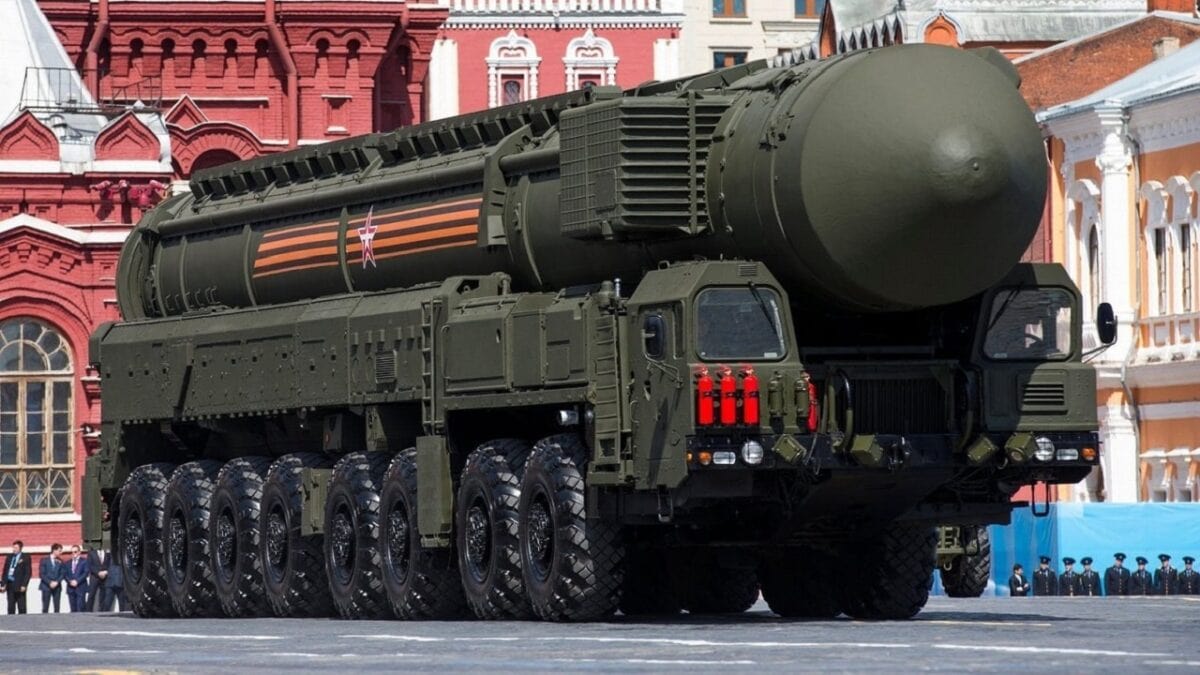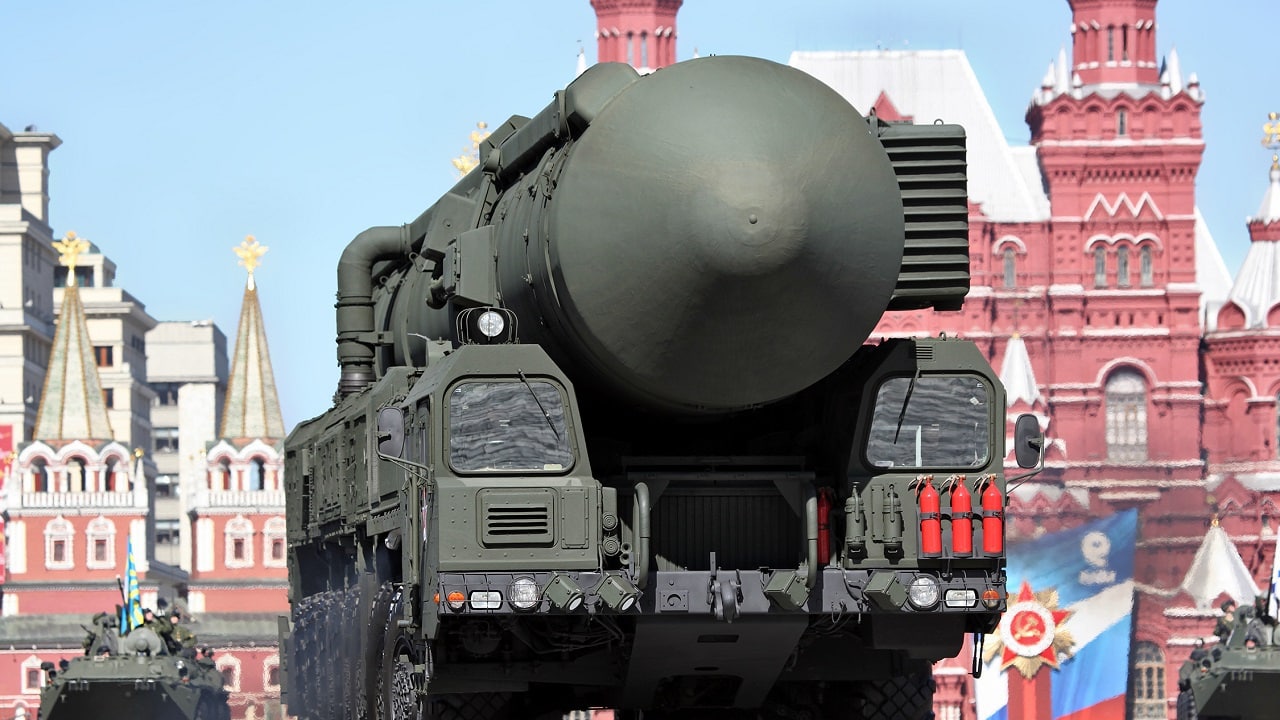Russia’s nuclear threat and drills may have a very distinct purpose:
In 2022, Russia conducted two strategic nuclear exercises (Grom or Thunder); one in February and one in October. Both exercises were related to Putin’s aggression against Ukraine and the associated Russian nuclear threats against the U.S. and NATO. The only other year there were two Grom exercises was in 2014 (May and October) when Putin seized and annexed Crimea and was fighting a war of aggression in eastern Ukraine. The February 2022[1] and May 2014 Grom exercises, both outside of the normal time frame, involved strategic and non-strategic nuclear forces; their main political aim was to threaten the U.S. and NATO with the threat of nuclear escalation. Virtually all Russian theater exercises reportedly end in a limited Russian nuclear attack. Large Russian Grom-type strategic nuclear exercises reportedly end with a massive nuclear strike against the U.S. and NATO. However, for the first time, in the October 2022 Grom exercise, Russia actually announced that it had trained for a a massive strategic nuclear strike. This certainly has political significance.
According to the Russian Defense Ministry, the October 2022 Grom exercise involved live launches of a “Yars intercontinental ballistic missile…[and] a Sineva ballistic missile from the Barents Sea…Two Tu-95MS long-range planes were involved in the exercise. Both fired cruise missiles.” According to the Kremlin’s website, “…all tasks were completed in full, and all missiles hit their targets, confirming the expected characteristics.” Russia’s Defense Minister, General of the Army Sergei Shoigu, told President Putin that Russia’s nuclear exercise was “a training session” which involved “delivering a massive nuclear strike by strategic offensive forces….” Russian state television stated it was practice for an attack on the U.S.
The previous Grom exercises usually involved one or two more live launches of strategic nuclear missiles. This reduction may be because of the February 2022 Grom exercise and Russian husbanding of its nuclear missile assets. All elements of Russia’s strategic Triad were exercised in the October Grom exercise, and they set the stage for Defense Minister Shoigu’s statement (in reality a threat) about training for a massive strategic nuclear strike. Neither the Kremlin nor the Russian Defense Ministry, in their announcement of the exercise, indicated there were any live launches of non-strategic or hypersonic nuclear missiles. This is unexpected because brandishing Russian hypersonic missiles is now a common Russian nuclear threat and a significant element of the February 2022 Grom exercise.
Sputnik News, Russian state media, indicated that non-strategic nuclear forces were involved in the exercise. It reported:
The exercises were planned earlier to test the readiness of military command and control bodies, launch combat crews, crews of warships and strategic missile carriers to fulfill their tasks, as well as the reliability of weapons of strategic nuclear and non-nuclear forces. Forces and means of the Aerospace Forces, the Southern Military District, the Strategic Missile Forces, the Northern and Black Sea fleets were involved in the exercises.
The Russian Defense Ministry then published footage of the Kinzhal missile [a hypersonic missile] launches from `small missile ship, launch of the Zirkon hypersonic missile from a frigate in the sea, launch of an intercontinental ballistic missiles Yars, ballistic missile Sineva from the Karelia submarine, as well as sorties of strategic bombers Tu-95MS before missile launches.
In addition to the hypersonic missile launches, the Russian videos included launches of the ballistic and cruise missiles of the Iskander system. Reportedly, the exercise involved “…the Space Aviation Force, Southern Provincial Forces, Strategic Missile Forces, and North and Black Sea Fleet.”
Announcing missile launches by releasing videos is not the way the Russian Defense Ministry normally does business. The videos it releases usually relate to what it says happened in the exercise. As a result, there was much less than the normal press coverage of the non-strategic missile launches. Most of the press coverage focused on Shoigu’s threat concerning training for a massive strategic nuclear strike and the strategic missile launches. This is apparently what Russia wanted. For example, TASS (the main official news agency) in its most detailed report on the October 2022 Grom exercise, compared it to the February Grom exercise, but did not mention any non-strategic or hypersonic missile launches, while it noted this took place in the February version of the exercise. The February Grom was particularly heavy in these types of nuclear missile launches.
The absence of any reference of a hypersonic missile launch in the released text of what was told to Putin is unusual. In the last several years, Russian nuclear threats frequently involve their new nuclear-capable hypersonic missiles. In September 2022, Putin ‘s National Security Council Deputy (and former President) Dimitri Medvedev wrote, “Various retired idiots wearing a general’s insignia should know better than to try to scare us with speculations about a NATO strike at Crimea. Hypersonic retaliation is…able to reach targets in Europe and the United States much faster, it’s guaranteed.” During the Ukraine war, President Putin made the hypersonic missile threat. Indeed, in late November 2021, when the Ukraine related nuclear threat barrage was just beginning, Putin threatened the deployment of a new naval hypersonic missile which “would also need just five minutes to reach those who issue orders.” This is a reference to threatening nuclear attacks on the U.S. National Command Authority. Yet, if the political objective of the October exercise was to generate press reports concerning Russian training for “delivering a massive nuclear strike by strategic offensive forces,” the lack of emphasis on the non-strategic missile and the non-strategic hypersonic missile launches makes more sense.
Clearly, the Russian statement concerning its massive strategic nuclear strike in the October Grom exercise was part of a pattern of orchestrated Russian nuclear threats designed to reinforce fear in the Biden administration not only of Russian nuclear weapons’ use against Ukraine but of global nuclear war. Some of these threats were more explicit than any previous ones. Starting a few months before the February Russian invasion of Ukraine, senior Russian officials were threatening all-out nuclear war. Russian Deputy Foreign Minister Sergei Ryabkov spoke about a new Cuban Missile Crisis. This was the closest the U.S. and the Soviet Union ever came to nuclear war. On the day President Putin launched his full-scale invasion of Ukraine, he threatened NATO with a response “never seen in history,” a clear reference to large scale use of nuclear weapons. When President Putin announced Russia’s partial mobilization, he again threatened nuclear weapons’ use: “In the event of a threat to the territorial integrity of our country and to defend Russia and our people, we will certainly make use of all weapon systems available to us. This is not a bluff.” Medvedev elaborated on his statement: “The Donbas (Donetsk and Luhansk) republics and other territories will be accepted into Russia. Russia has announced that not only mobilisation capabilities, but also any Russian weapons, including strategic nuclear weapons and weapons based on new principles, could be used for such protection.” Indeed, Medvedev even suggested that “punishing” Russia over war crimes “…potentially poses a threat to the existence of humanity.”
Thus, General Shoigu’s threat of a “massive nuclear strike by strategic offensive forces” fits very well into this pattern of nuclear intimidation. Writing in Foreign Affairs, Christopher Bort observes, “Putin also knows that in the back of his opponents’ minds lurks a fear of escalation to nuclear conflict, which limits their willingness to challenge him militarily.” The emphasis on a Russian massive strategic nuclear strike in Defense Minister Shoigu’s statement and the strategic missile launches announced by Chief of the General Staff General of the Army Valery Gerasimov were apparently intended to increase concern in the Biden White House. It apparently reflects the fact that the Biden administration, including President Biden, have repeatedly voiced concern about nuclear escalation and World War III. Time magazine even reports that, “The Risk of Nuclear War is Now a Daily Issue for the Biden Administration.”

Russia’s road-mobile ICBMs that carry nuclear weapons.
Russian nuclear threats seem to be working. According to U.S. National Security Advisor Jake Sullivan, the U.S. won’t provide Ukraine with long-range missiles (i.e., over 300-km which are hardly long-range) because, “…while a key goal of the United States is to support and defend Ukraine, another key goal is to ensure that we do not end up in a circumstance where we are heading down the road toward a third world war.” This policy will allow for a continuation of Russia’s devastating attacks on Ukraine’s electricity infrastructure with little fear of Ukrainian retaliation. In effect, it is a rejection by the Biden administration of the very concept of deterrence through punishment. Moreover, the Biden administration is going to resume arms control negotiations with Russia for the first time since the invasion of Ukraine. It also reportedly is “…privately encouraging Ukraine’s leaders to signal an openness to negotiate with Russia and drop their public refusal to engage in peace talks unless President Vladimir Putin is removed from power, according to people familiar with the discussions.” The only possible outcome of such a negotiation at this time is its failure or a surrender to Russian territorial demands. In light of the normal propensities of the Biden administration, one would expect a gradual erosion of U.S. support for Ukraine and a gradual increase in pressure on Ukraine to cede territory to Russia.
Dr. Mark B. Schneider is a Senior Analyst with the National Institute for Public Policy. Before his retirement from the Department of Defense Senior Executive Service, Dr. Schneider served as Principal Director for Forces Policy, Principal Director for Strategic Defense, Space and Verification Policy, Director for Strategic Arms Control Policy and Representative of the Secretary of Defense to the Nuclear Arms Control Implementation Commissions. He also served in the senior Foreign Service as a Member of the State Department Policy Planning Staff. This first appeared in RealClearDefense.

